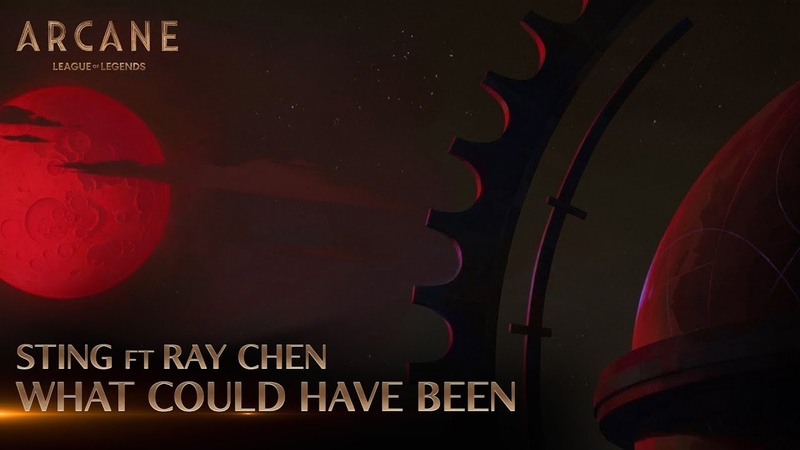Stingray stings what to do. Stingray Sting First Aid: Essential Steps for Immediate Treatment and Recovery
What are the immediate actions to take after a stingray sting. How to identify symptoms of a severe reaction. What are the best methods for pain relief and wound care. How to prevent stingray stings while enjoying beach activities.
Understanding Stingrays and Their Defensive Mechanism
Stingrays are fascinating marine creatures known for their flat, disk-shaped bodies and wing-like fins. These animals can be found in both saltwater and freshwater environments, with many species inhabiting tropical ocean climates. Despite their reputation for being generally gentle, stingrays possess a powerful defensive mechanism that can cause significant pain and injury to humans.
At the center of a stingray’s defense is its tail, which is long, thin, and tapered like a whip. The tail contains one or more barbed spines covered by a protective sheath. These spines are not just sharp; they’re also venomous. When a stingray feels threatened, it can whip its tail upward and over its body, potentially striking an unsuspecting victim.
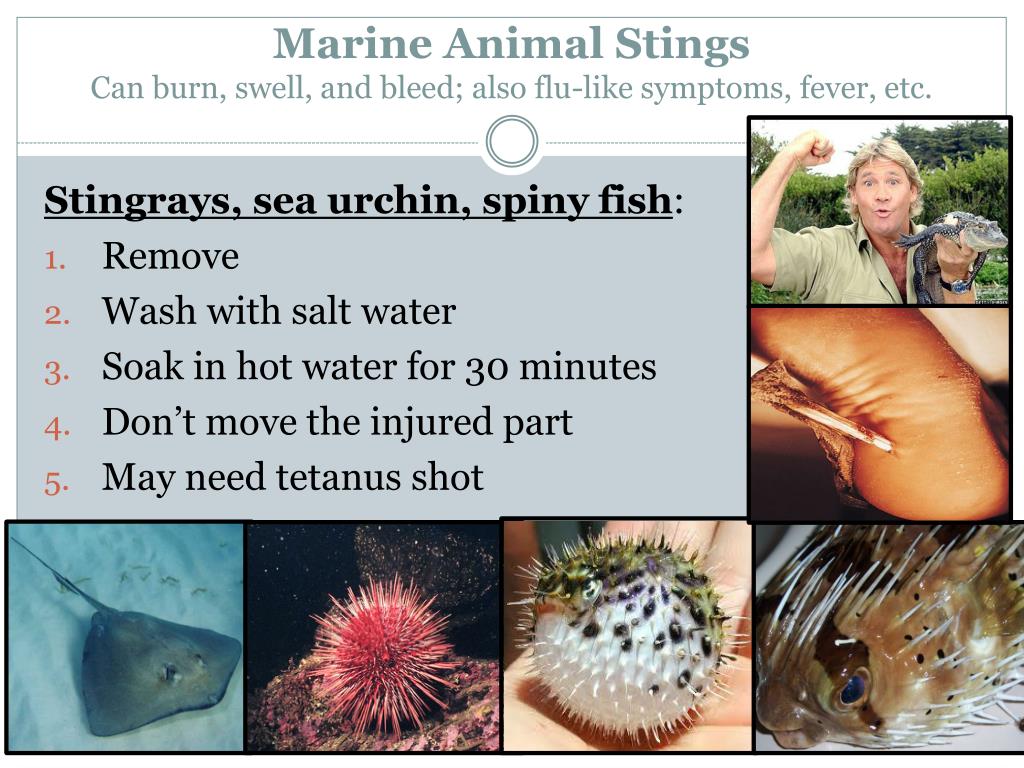
Why do stingrays sting humans?
Stingrays typically sting only when they feel threatened or are accidentally stepped on. Their natural camouflage ability, which allows them to blend in with the sandy ocean floor, can make them difficult for swimmers to spot. This is why most stingray injuries occur when people unknowingly step on these creatures in shallow water.
Immediate First Aid for Stingray Stings
If you or someone near you is stung by a stingray, it’s crucial to act quickly. The immediate pain from a stingray sting can be severe, but proper first aid can help manage the pain and prevent complications.
- Assess the wound location: If the sting is in a critical area such as the throat, neck, abdomen, or chest, or if the barb has completely pierced through a body part, do not attempt to remove it. Seek emergency medical attention immediately.
- Remove the barb: For stings in less critical areas, carefully remove the barb if it’s still embedded in the skin.
- Clean the wound: Remain in the ocean and allow the saltwater to naturally clean the wound. This also helps to flush out some of the venom.
- Apply pressure: Press on the wound to slow bleeding and encourage more venom to exit the injury site.
- Remove debris: While still in the water, try to clear out any visible debris from the wound.
Can hot water help with stingray stings?
Yes, hot water is an effective treatment for stingray stings. The heat helps to neutralize the venom and can provide significant pain relief. After ensuring you’re not having an allergic reaction, soak the affected area in water heated to 110째F to 115째F (43째C to 46째C) for 30 to 90 minutes, or until the pain subsides. Remember to reheat the water every 10 minutes to maintain the temperature.

Recognizing Symptoms of Stingray Stings
Stingray stings can cause a range of symptoms, from localized pain to more severe systemic reactions. It’s important to be aware of these symptoms to determine the severity of the sting and whether advanced medical care is needed.
Common symptoms of stingray stings:
- Intense pain at the wound site
- Bleeding and swelling
- Nausea and vomiting
- Dizziness and fatigue
- Muscle cramps and abdominal pain
- Swollen lymph nodes near the sting site
- Skin discoloration around the wound
When should you seek emergency medical care for a stingray sting?
While many stingray stings can be treated with first aid, some situations require immediate medical attention. Seek emergency care if you experience any of the following symptoms:
- Difficulty breathing or shortness of breath
- Irregular heartbeat
- Fainting or severe dizziness
- Seizures
- Muscle paralysis
- Excessive sweating
These symptoms may indicate a severe allergic reaction or systemic effects of the venom, which can be life-threatening if not treated promptly.

Advanced Treatment for Stingray Injuries
While many stingray stings can be effectively treated with first aid, some cases require more advanced medical intervention. Understanding when to seek professional help and what to expect during treatment can be crucial for proper recovery.
What does professional medical treatment for stingray stings involve?
If you seek emergency medical care for a stingray sting, healthcare providers will typically follow these steps:
- Wound inspection: Thoroughly examine the wound to assess its severity and location.
- Debris removal: Carefully remove any remaining fragments of the spine or sheath from the wound.
- Imaging: Take X-rays to ensure all debris has been cleared, as spine and sheath fragments are visible on X-rays.
- Wound closure: For large or deep wounds, stitches may be necessary.
- Antibiotic treatment: Administer antibiotics, either orally or intravenously, to prevent infection.
- Tetanus prevention: Provide a tetanus booster if the patient is not up to date on their vaccination.
Long-term Care and Potential Complications
While most stingray stings heal without long-term complications, proper follow-up care is essential to prevent infection and ensure complete recovery.

How do you care for a stingray sting wound at home?
After initial treatment, follow these steps for ongoing wound care:
- Clean the wound daily with mild soap and water.
- Apply an antibiotic ointment to prevent infection.
- Cover the wound with a clean, dry bandage.
- Change the bandage daily or more often if it becomes wet or dirty.
- Monitor the wound for signs of infection, such as increased redness, swelling, or discharge.
What are the signs of infection in a stingray sting wound?
Be vigilant for these signs of infection and seek medical attention if they occur:
- Increased pain, redness, or swelling around the wound
- Warmth or tenderness in the affected area
- Pus or foul-smelling discharge from the wound
- Fever or chills
- Red streaks extending from the wound
Preventing Stingray Stings
While stingray stings can be painful and potentially dangerous, they are often preventable with the right precautions. Understanding stingray behavior and adopting safe practices when in their habitat can significantly reduce the risk of encounters.

How can you avoid stepping on a stingray?
The most effective method to prevent stingray stings is the “stingray shuffle.” Here’s how to do it:
- Wade slowly through shallow water.
- Instead of lifting your feet with each step, slide them along the bottom.
- This shuffling motion alerts stingrays to your presence, giving them time to swim away.
Another preventive measure is to throw small shells or pebbles into the water ahead of you as you wade. This creates disturbances that can prompt hidden stingrays to move away.
What are other safety tips for swimming in stingray-inhabited waters?
- Be aware of your surroundings and watch for signs of marine life.
- Avoid areas where stingrays are known to frequent, especially during their peak seasons.
- Wear protective footwear, such as water shoes, when walking in shallow water.
- Don’t touch or provoke stingrays if you see them while swimming or diving.
- Pay attention to local warnings or beach flags that may indicate the presence of stingrays.
Understanding Stingray Venom and Its Effects
Stingray venom is a complex mixture of proteins and other compounds that can cause a range of effects on the human body. Understanding the nature of this venom can help explain the symptoms experienced after a sting and the rationale behind certain treatment methods.

What makes stingray venom so painful?
Stingray venom contains several components that contribute to its painful effects:
- Serotonin: Causes intense pain and can lead to muscle cramps.
- Proteases: Enzymes that break down proteins, potentially damaging surrounding tissues.
- Neurotoxins: Affect nerve function, contributing to pain and potential systemic effects.
The combination of these components, along with the physical trauma of the sting itself, results in the characteristic severe pain associated with stingray injuries.
Why does hot water help neutralize stingray venom?
Hot water is an effective treatment for stingray stings because many of the venom’s components are heat-labile, meaning they break down at high temperatures. When the affected area is immersed in hot water:
- The heat causes the venom proteins to denature, or lose their structure.
- This denaturation renders the venom less effective, reducing its ability to cause pain and tissue damage.
- The heat also helps to increase blood flow to the area, which can aid in flushing out the venom.
It’s important to note that while hot water treatment is highly effective, it should not delay seeking medical attention if severe symptoms are present.

Ecological Importance of Stingrays and Conservation Efforts
While stingrays can pose a risk to humans in certain situations, it’s crucial to understand their important role in marine ecosystems and the conservation challenges they face. Stingrays are a key species in many marine environments, contributing to the health and balance of ocean ecosystems.
What ecological roles do stingrays play?
Stingrays contribute to marine ecosystems in several ways:
- Predator-prey relationships: They help control populations of bottom-dwelling organisms like mollusks and crustaceans.
- Bioturbation: Their feeding habits disturb sediments, which can release nutrients and benefit other marine life.
- Indicator species: The health of stingray populations can reflect the overall health of their marine habitats.
What conservation challenges do stingrays face?
Stingrays, like many marine species, face several threats to their survival:
- Overfishing: Some species are targeted for their meat, skin, or for use in traditional medicines.
- Bycatch: Stingrays are often accidentally caught in fishing gear intended for other species.
- Habitat destruction: Coastal development and pollution can damage or destroy important stingray habitats.
- Climate change: Warming oceans and changing marine chemistry can affect stingray populations and their prey.
Conservation efforts for stingrays often focus on sustainable fishing practices, habitat protection, and public education about the importance of these animals in marine ecosystems. By understanding and appreciating stingrays, we can work towards coexisting safely with these fascinating creatures while ensuring their continued presence in our oceans.

Bites, First Aid, Symptoms, and Treatment
Stingrays are flat, disk-shaped creatures with fins that resemble wings. Species of stingray can be either saltwater or freshwater. They’re most often associated with tropical ocean climates, and their sting is a commonly reported beachgoer injury.
A stingray’s tail is long, thin, and tapered, much like a whip. In the middle of the tail are one or more barbed spines covered by a sheath. Each spine contains venom, and the stingray’s tail can pack a powerful, incredibly painful sting.
Stingrays generally aren’t dangerous — in fact, they have a reputation for being gentle. They often burrow beneath the sand in the shallows and swim in the open water. Stingrays will usually only sting when disturbed or stepped on by unaware swimmers.
Most of the time, you can avoid being stung by a stingray. But if you do experience a stingray sting, there are several things you can do immediately to start relieving the pain.
When stung by a stingray, you’ll feel immediate, severe pain at the wound site. You need to begin treating the wound right away if it’s superficial.
You need to begin treating the wound right away if it’s superficial.
If the barb has punctured your throat, neck, abdomen, or chest, or has pierced completely through part of your body, don’t attempt to remove it. Seek emergency medical attention immediately.
Otherwise, remain in the ocean and pull the barb out if you can. Allow the salt water to clean the wound while applying pressure over it to both slow the bleeding and encourage the venom to come out.
Try to clear out any additional debris you might see in the cut or puncture while you’re still in the water.
Pay close attention to how you feel in the sting’s aftermath. It’s possible to have a life-threatening allergic reaction to stingray venom, which requires emergency medical care. Expect the area to swell.
Hot water kills stingray venom and may relieve the pain associated with the sting. Once you’ve determined you’re not having an allergic reaction, you might want to try soaking the sting in hot water.
The ideal temperature for a soak is 110°F to 115°F (43°C to 46°C). Reheat your water every 10 minutes to keep it continually hot, and soak the wound for 30 to 90 minutes, or as long as it takes for the pain to subside. The hot water may also draw out venom, which resembles jelly.
Once you’ve relieved the pain, apply antibiotic ointment or cream to the wound and cover it with gauze.
If you’re stung by a stingray, you may experience these symptoms:
- abdominal pain
- anxiety
- bleeding
- diarrhea
- dizziness
- extreme pain at the wound site
- fatigue
- headache
- low blood pressure
- muscle cramps
- nausea
- necrosis (death) of surrounding tissue
- pain in the extremities
- painful, swollen lymph nodes near the site
- skin discoloration
- swelling
- vomiting
The following symptoms could be signs of a systemic reaction or respiratory distress and require immediate emergency medical care:
- fainting
- irregular heartbeat
- muscle paralysis
- seizures
- shortness of breath
- sweating
It’s possible for the heart to stop or for the body to go into shock after a stingray sting. Some people have died as a result of stings in their chests and abdomens.
Some people have died as a result of stings in their chests and abdomens.
If you have a puncture wound and aren’t up to date on your tetanus booster, it’s time to get it renewed.
If you’ve had the wound for a while but are slow to recover, you experience redness or additional swelling at the site, or the site begins to ooze pus, get treatment right away. The site may be infected, and your doctor may prescribe antibiotics (oral or intravenous) to treat it.
Because stingrays camouflage themselves under sand to hunt for prey, they can be hard to spot and easy to step on if you don’t know what to look for.
Once it’s been threatened, a stingray will whip its tail in defense — which can reach up and over its head — leaving a laceration or puncture wound in your skin.
When a stingray whips its tail at you, one or more of its spines may pierce your skin. The sheath around each spine then breaks apart and releases venom into the wound and surrounding tissue.
Stingrays most often sting people in their feet, ankles, and legs, but sometimes a sting may occur elsewhere on the body.
To avoid a stingray sting, shuffle your feet in the sand as you wade through shallow water. This will give stingrays a warning that you’re coming their way. Another option is to throw shells or small rocks into the water ahead of you as you wade.
If you do seek emergency medical care, your healthcare providers will closely inspect your wound. They will need to remove any debris left in the wound from the spines or the sheath.
They may take X-rays of the sting site to determine whether all the debris has been cleared. Spine and sheath fragments are visible on an X-ray.
You might receive an antibiotic via prescription or IV, as well as stitches if the wound is large or deep. You may also receive a tetanus booster.
In some cases, you might require surgery after a stingray sting to remove dead tissue or to repair a severe wound.
For most people, stingray stings heal within a few weeks. Expect localized numbness and tingling around the wound site during the healing period.
Location of the sting, amount of venom in the tissue, extent of tissue damage, and promptness of treatment will affect healing time. If you have to undergo surgery after the sting, your recovery will take more time.
Stingray Information | Mount Sinai
A stingray is a sea animal with a whip-like tail. The tail has sharp spines that contain venom. This article describes the effects of a stingray sting. Stingrays are the most common group of fish that sting humans. Twenty-two species of stingrays are found in US coastal waters, 14 in the Atlantic and 8 in the Pacific.
This article is for information only. DO NOT use it to treat or manage an actual stingray sting. If you or someone you are with is stung, call your local emergency number (such as 911), or your local poison center can be reached directly by calling the national toll-free Poison Help hotline (1-800-222-1222) from anywhere in the United States.
Poisonous Ingredient
Stingray venom is toxic.
Where Found
Stingrays and related species that carry toxic venom live in oceans all over the world.
Symptoms
Below are symptoms of a stingray sting in different parts of the body.
AIRWAYS AND LUNGS
- Breathing difficulty
EARS, NOSE AND THROAT
- Salivating and drooling
HEART AND BLOOD
- No heartbeat
- Irregular heartbeat
- Low blood pressure
- Collapse (shock)
NERVOUS SYSTEM
- Fainting
- Body cramps and muscle twitching
- Headache
- Numbness and tingling
- Paralysis
- Weakness
SKIN
- Bleeding
- Discoloration and blistering, sometimes containing blood
- Pain and swelling of lymph nodes near the area of the sting
- Severe pain at site of sting
- Sweating
- Swelling, both at the sting site and throughout the body, especially if the sting is on the skin of the trunk
STOMACH AND INTESTINES
- Diarrhea
- Nausea and vomiting
Home Care
Seek medical help right away. Contact your local emergency services. Wash the area with salt water. Remove any debris, such as sand, from the wound site. Soak the wound in the hottest water the person can tolerate for 30 to 90 minutes.
Contact your local emergency services. Wash the area with salt water. Remove any debris, such as sand, from the wound site. Soak the wound in the hottest water the person can tolerate for 30 to 90 minutes.
Before Calling Emergency
Have this information ready:
- Person’s age, weight, and condition
- Type of sea animal
- Time of the sting
- Location of the sting
Poison Control
Your local poison center can be reached directly by calling the national toll-free Poison Help hotline (1-800-222-1222) from anywhere in the United States. They will give you further instructions.
They will give you further instructions.
They will tell you if you should take the person to the hospital. They will also tell you how to do any first aid that can be given before you get to the hospital.
This is a free and confidential service. All local poison control centers in the United States use this national number. You should call if you have any questions about poisoning or poison prevention. It does NOT need to be an emergency. You can call for any reason, 24 hours a day, 7 days a week.
What to Expect at the Emergency Room
The health care provider will measure and monitor the person’s vital signs, including temperature, pulse, breathing rate, and blood pressure. The wound will be soaked in a cleaning solution and any remaining debris will be removed. Symptoms will be treated. Some or all of these procedures may be performed:
The wound will be soaked in a cleaning solution and any remaining debris will be removed. Symptoms will be treated. Some or all of these procedures may be performed:
- Blood and urine tests
- Breathing support, including oxygen, tube through the mouth into the throat, and breathing machine (ventilator)
- ECG (electrocardiogram, or heart tracing)
- Intravenous fluids (IV, through a vein)
- Medicine called an antiserum to reverse the effect of the venom
- Medicine to treat symptoms
- X-rays
Outlook (Prognosis)
The outcome often depends on how much venom entered the body, the location of the sting, and how soon the person receives treatment. Numbness or tingling may last for several weeks after the sting. Deep stinger penetration may require surgery for removal. Skin breakdown from the venom is sometimes severe enough to require surgery.
Numbness or tingling may last for several weeks after the sting. Deep stinger penetration may require surgery for removal. Skin breakdown from the venom is sometimes severe enough to require surgery.
A puncture in the person’s chest or abdomen may lead to death.
Auerbach PS, DiTullio AE. Envenomation by aquatic vertebrates. In: Auerbach PS, Cushing TA, Harris NS, eds. Auerbach’s Wilderness Medicine. 7th ed. Philadelphia, PA: Elsevier; 2017:chap 75.
Otten EJ. Venomous animal injuries. In: Walls RM, Hockberger RS, Gausche-Hill M, eds. Rosen’s Emergency Medicine: Concepts and Clinical Practice. 9th ed. Philadelphia, PA: Elsevier; 2018:chap 55.
Stone DB, Scordino DJ. Foreign body removal. In: Roberts JR, Custalow CB, Thomsen TW, eds. Roberts and Hedges’ Clinical Procedures in Emergency Medicine and Acute Care. 7th ed. Philadelphia, PA: Elsevier; 2019:chap 36.
7th ed. Philadelphia, PA: Elsevier; 2019:chap 36.
Last reviewed on: 7/20/2021
Reviewed by: Jesse Borke, MD, CPE, FAAEM, FACEP, Attending Physician at Kaiser Permanente, Orange County, CA. Also reviewed by David Zieve, MD, MHA, Medical Director, Brenda Conaway, Editorial Director, and the A.D.A.M. Editorial team.
Stingrays in the Black Sea (stingrays): are they found, why are they dangerous, can they be eaten? They can imagine giant sharks and octopuses even in the harmless and long-studied Black Sea. However, the absence of these monsters here does not mean the complete safety of the Black Sea waters in terms of living creatures unfriendly to humans. For example, there are stingrays here.
Black Sea rays: what are they?
Let’s say right away – there are no giants or electric monsters in the Black Sea area. No one has yet managed to die from a meeting with a local stingray. But these fish are here and they can cause certain troubles.
In the Black (and Azov) Sea there are relatively small species of rays. There are two of them – a sea fox and a sea cat. Where such associations came from is not clear to anyone, but the colloquial names of fish are just that.
Sea fox (Raja clavata), or spiny stingray, quite beautiful (upper surface of the body in intricate patterns) and large fish. Females reach a size of more than a meter, males are somewhat smaller.
The fish lives at a relatively large distance from the coast at a depth of more than 20 m. It can only be carried to the coast by a storm or current. The stingray prefers the muddy bottom, feeds on benthic invertebrates and small fish. The shape of his body is flat, diamond-shaped, the tail is long and thin (it doesn’t look like a fox at all).
The stingray lays eggs (you can’t call a box 5 cm in diameter an egg) with hooks. With which they cling to algae. After hatching, “foxes” empty shells are often found by vacationers on the beaches.
On the outer surface of the sea fox’s body along the back and at the base of the tail there are sharp spines. Hence the name “spiky stingray”.
Sea cat (Dasyatis pastinaca), or common stingray – just a classic of the stingray genre. This is a medium-sized fish (usually up to 1 m with a tail, although it can be larger), with a flat, rounded diamond-shaped body.
The tail is somewhat similar in form and function to a whip, and has a rather long serrated barb that the stingray uses for self-defense. In many stingrays, you can see several spikes – they break easily, and after that the stingray begins to grow a new tail, like a lizard.
Stingrays also feed on small benthic animals and fish. They are viviparous – not eggs or eggs are born, but ready-made small skates. In the Black Sea, this is a fairly common sight.
You may be interested in: Jellyfish of the Sea of Azov
Why does a man need a stingray?
The stingray fish is interesting in appearance – flat, without scales, and swims in an unusual way. But is there any practical use for people from it?
But is there any practical use for people from it?
This is a moot point. Catching stingrays on an industrial scale is carried out in many countries, but they are not caught in the Black Sea. There is also tastier fish here – for example, the Black Sea katran. Stingrays are very fatty, their meat has a characteristic smell of blubber (whale oil) – not the most pleasant.
Why are they caught then? First of all, for the sake of the liver. She is also very fat. And in European countries, various expensive restaurant dishes are prepared from it (healthy and tasty). It is also believed that the liver of stingrays has a wound-healing effect.
Do they generally eat stingrays? Yes, they eat. It’s just that you need to be able to cook this fish – it’s impossible to simply plop a stingray into a frying pan in flour (that is, it will work, but not God knows what).
Are the slopes of the Black Sea dangerous?
Since the stingray is not a commercial fish in the Black Sea region, it is more important for tourists in the Crimea to understand whether these fish are dangerous. And the news is not very comforting: they are quite dangerous.
And the news is not very comforting: they are quite dangerous.
It is problematic to die after meeting with a stingray – as far as statistics are known, no one has managed to do this in the Black Sea region so far. But getting an intractable injury is quite real.
Sea foxes are relatively harmless, as they are rarely caught in shallow water. However, there is still a risk of accidentally stepping on a fish buried in the silt and getting hurt on its thorns. They are not poisonous, but the damage heals for a long time. And yes, you can be very scared.
The stingray will never attack a person either, but if you try to catch it in a shallow place or step on it, it defends itself with a whipping blow of the tail, which has a long serrated spike. The blow is very painful; in addition, the thorn is poisonous and breaks easily, so a piece of it can get stuck in the wound. The damage is long and painful, there are other symptoms of poisoning (for example, fever).
It is also possible to get injured when cutting the stingray for cooking. Although these fish are not caught commercially, they often end up in nets along with other catches, and they are often sold in bazaars.
Precautions
Reviews of tourists on the Black Sea often describe scenes of driven hunting for stingrays near the beaches or fishing with a spear. So – someone who does not want to painfully pull the stingray spike out of his leg later does not need to do such things. This is the first and main rule of “anti-skate” security.
When butchering fish, the first thing to do is to remove the thorn or remove the skin with thorns (if a sea fox is caught). This guarantees against damage during further operations.
You can’t guarantee yourself against a stingray in shallow water – it’s hard to spot it. In case of unexpected severe pain in the leg, you should get ashore as soon as possible (especially if it is not the supporting surface of the foot that hurts, but somewhat higher) and go to the doctor. Wounds inflicted by stingrays, in any case, need careful treatment.
Wounds inflicted by stingrays, in any case, need careful treatment.
If unfortunate enough to run into a stingray, pain relief, surgery to remove the broken piece of the thorn, and antihistamines may be needed to reduce symptoms of poisoning. Unfortunately, the vacation can be ruined, as the soreness can persist for several days. Then everything passes without consequences.
Do not miss also: What sharks are found in the Black Sea and What are the dangers of Black Sea jellyfish
Black Sea stingrays are unsafe fish. But still, they are not found at every turn and never show aggression against a person first. Therefore, you should not be especially nervous because of their presence near the Crimean coast – meeting with a stingray on the beach is an exception, not a rule.
Like it? Share with friends!
What rays should be afraid and avoided
Hot summer weather means we are more likely to share our seaside beaches with some animals that we may not be very happy to see. These are the slopes.
These are the slopes.
Stingrays appear calm as they glide through shallow waters, but reaching up to 350 kg in weight and armed with a poisonous stinger, they can be very dangerous. Recently, a record number of contacts has been recorded. In early January, on one of the beaches in California, 73 people were injured in a day.
Stingrays are also famous for killing Australian naturalist Steve Irwin. However, for stingray researcher Helen Cadwalader, this is a great opportunity to learn more about this little-studied animal.
She is completing her PhD in stingrays in Tauranga, New Zealand, and she has some advice on what to do if you encounter them at sea.
The most dangerous rays
Very little is known about the biology of most rays because information about them is largely obscured by their more dangerous relatives, the sharks. This is unfortunate, as these “pancake sharks” are interesting creatures in their own right. Worldwide, there are at least 96 species of rays (families Dasyatididae and Urolophidae combined), of which 5 are found in the Caribbean. The most common is the American stingray (lat. Dasyatis americana).
The most common is the American stingray (lat. Dasyatis americana).
1. The American Stingray is a coastal species often found in shallow, open areas of sand and silt. It is commonly found in bays and estuaries, usually buried in the sand, with only the eyes and spiracles visible. The range of depths is known – from the intertidal zone to at least 25 meters. The disc of the young is gray-brown above, white below. Adults are usually a uniform dark brown above, cream and beige below, and the undersides of the pectoral and pelvic fins are sometimes dark-edged.
Photo. American stingray (Dasyatis thetidis)
These rays have been observed singly, in pairs and in aggregations. Although most stingrays are bottom stingrays, this species jumps out of the water, making a loud bang when entering the water. This jump is explained by attempts to free themselves from parasites, but rays have overlapping dermal denticles (scales) that prevent most skin parasites from appearing.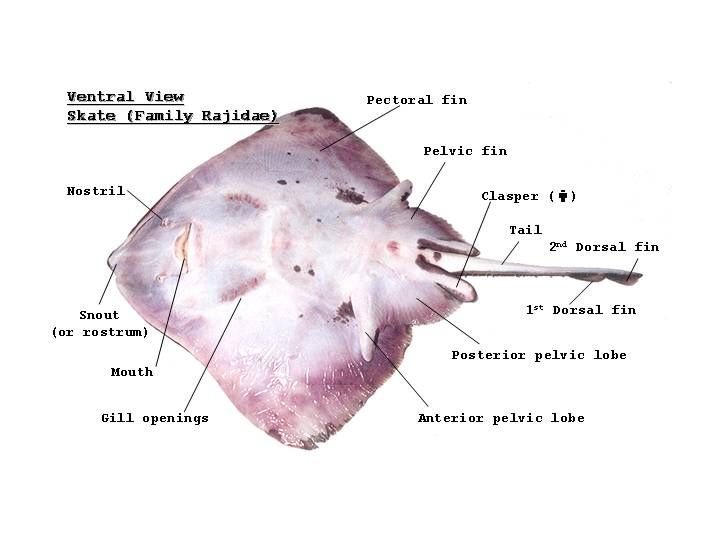 Most likely, these jumps are associated with some kind of social manifestation (mating or even declaring territorial boundaries). The American stingray is usually inactive during the daytime, often lying in the sand, becoming active at night when it hunts on coastal sandy beaches. He actively hunts small bottom dwellers. The stingray detects burrowing prey by “hydraulic prey” (forcibly pushing water out of its mouth) or by vigorously flipping its pectoral fins, then the stingray’s body rises from the bottom using its thoracic disc and the prey enters the mouth. This species feeds equally on bony fish, crabs and worms; he occasionally eats shellfish, shrimp, mantis shrimp, and tuna. The shellfish are crushed using modified dental plates, and shell fragments are spat out.
Most likely, these jumps are associated with some kind of social manifestation (mating or even declaring territorial boundaries). The American stingray is usually inactive during the daytime, often lying in the sand, becoming active at night when it hunts on coastal sandy beaches. He actively hunts small bottom dwellers. The stingray detects burrowing prey by “hydraulic prey” (forcibly pushing water out of its mouth) or by vigorously flipping its pectoral fins, then the stingray’s body rises from the bottom using its thoracic disc and the prey enters the mouth. This species feeds equally on bony fish, crabs and worms; he occasionally eats shellfish, shrimp, mantis shrimp, and tuna. The shellfish are crushed using modified dental plates, and shell fragments are spat out.
Thousands of divers have fed these rays without serious incident. While a few divers have been bitten on their arms or legs, the flat dental plates of these rays cause minimal damage. But at least one serious stingray injury has been reported to a diver in Stingray City. Although the stingrays in Stingray City are quite accustomed to divers, the stingrays are potentially dangerous and it would be wise to keep this in mind when interacting with them. Rays, like sharks, mostly use the “path of least resistance”: they will run away, not fight, most of them will just swim away. But if persistently pursued, stingrays are quite capable of defending themselves. About 1,500 stingray-related injuries are reported each year in the US alone, mostly minor wounds around the legs and ankles. But some stingray injuries are fatal. A couple of years ago, a 35-year-old Australian man on holiday in Fiji was stung in the chest while swimming over a large stingray, the thorn went through his heart and he died a day later as a result of the injury.
Although the stingrays in Stingray City are quite accustomed to divers, the stingrays are potentially dangerous and it would be wise to keep this in mind when interacting with them. Rays, like sharks, mostly use the “path of least resistance”: they will run away, not fight, most of them will just swim away. But if persistently pursued, stingrays are quite capable of defending themselves. About 1,500 stingray-related injuries are reported each year in the US alone, mostly minor wounds around the legs and ankles. But some stingray injuries are fatal. A couple of years ago, a 35-year-old Australian man on holiday in Fiji was stung in the chest while swimming over a large stingray, the thorn went through his heart and he died a day later as a result of the injury.
2. New Zealand bracken (lat. Myliobatis tenuicaudatus)
Photo. New Zealand bracken (lat. Myliobatis tenuicaudatus)
They are diamond shaped, olive green on the back and often spotted blue or gray and white underneath. They have thin, fragile tails and can be up to about 1.5 meters wide.
They have thin, fragile tails and can be up to about 1.5 meters wide.
“These guys are found everywhere, in the surrounding areas, bays, estuaries, harbors and coastal waters near reefs and over sandy reefs,” said Helen Cadwalader.
“In intertidal areas, they can make distinctive feeding holes to dig up prey such as shellfish, crabs, shrimp, and sediment-dwelling worms. They can be seen all year round, although in winter there are fewer of them in estuaries and harbors.
3. Short-tailed stingray (lat. Dasyatis brevicaudata)
Photo. Short-tailed Ray (lat. Dasyatis brevicaudata)
These are very large and round rays with thick tails and can reach over 2.3 meters in width. They are grey, silver or black in color, have distinctive white patches on both sides of their bodies, and have very smooth skin.
“This species is often found on the wharfs and travels over the sandy areas in the harbor during the summer months, but is also found on reefs and islands,” she says.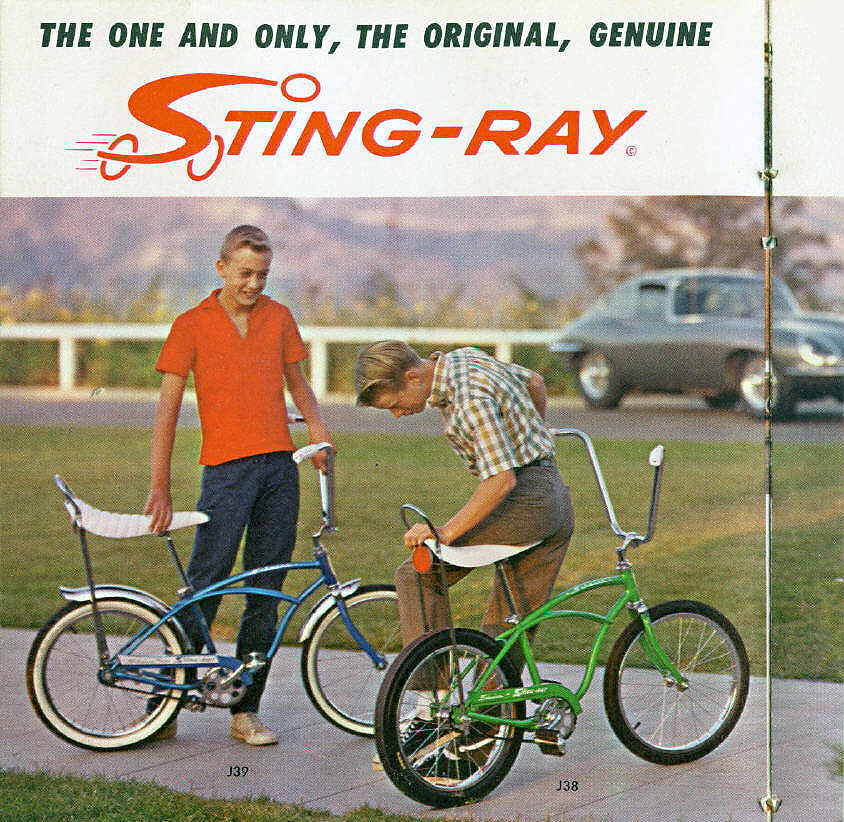
“During the summer months, large numbers of this species gather on the Poor Knights, possibly for breeding. It is not known where they go during the winter months.”
4. Long-tailed stingray (lat. Dasyatis thetidis)
Photo. Long-tailed stingray (lat. Dasyatis thetidis)
This is another very large species found in places where there is also a short-tailed stingray and can reach over 2.1 meters.
“The long-tailed stingray differs from the short-tailed ray because of the absence of white spots and the long tail, which in this species is very long and slender at the end.”
5. Other rays are less common, but still dangerous to humans, these are Taeniura meyeni , Dasyatis colarensis , Dasyatis garouaensis and Dasyatis laosensis . Also, do not forget about electric rays, which are interesting and dangerous for humans in their own way.
How to avoid attack
Eagles, rays and rays are not inherently aggressive, but they will defend themselves.
When the stingray attacks, it must face its prey, because all it does is raise its long tail above its body to strike what is in front of it. The stingray has no direct control over the spike mechanism, only the tail. In most cases, when the spike enters the human body, the pressure causes the containment to rupture. When the shell breaks, the sharp, jagged edges of the spike sink in and the venom enters the wound.
Stingray venom is not necessarily fatal, but it is very painful. It consists of the enzymes 5-nucleotidase, phosphodiesterase, and the neurotransmitter serotonin. Serotonin causes smooth muscles to contract strongly, and it is this component that makes the venom so painful. Enzymes cause tissue and cell death. If the poison has hit a spot, like an ankle, it usually heals easily. The heat breaks down the poison and limits the amount of damage it can do. If not treated quickly enough, amputation may be required. But if the poison enters the abdominal or chest cavity, then as a result of tissue death, one of the main organs located nearby may turn off.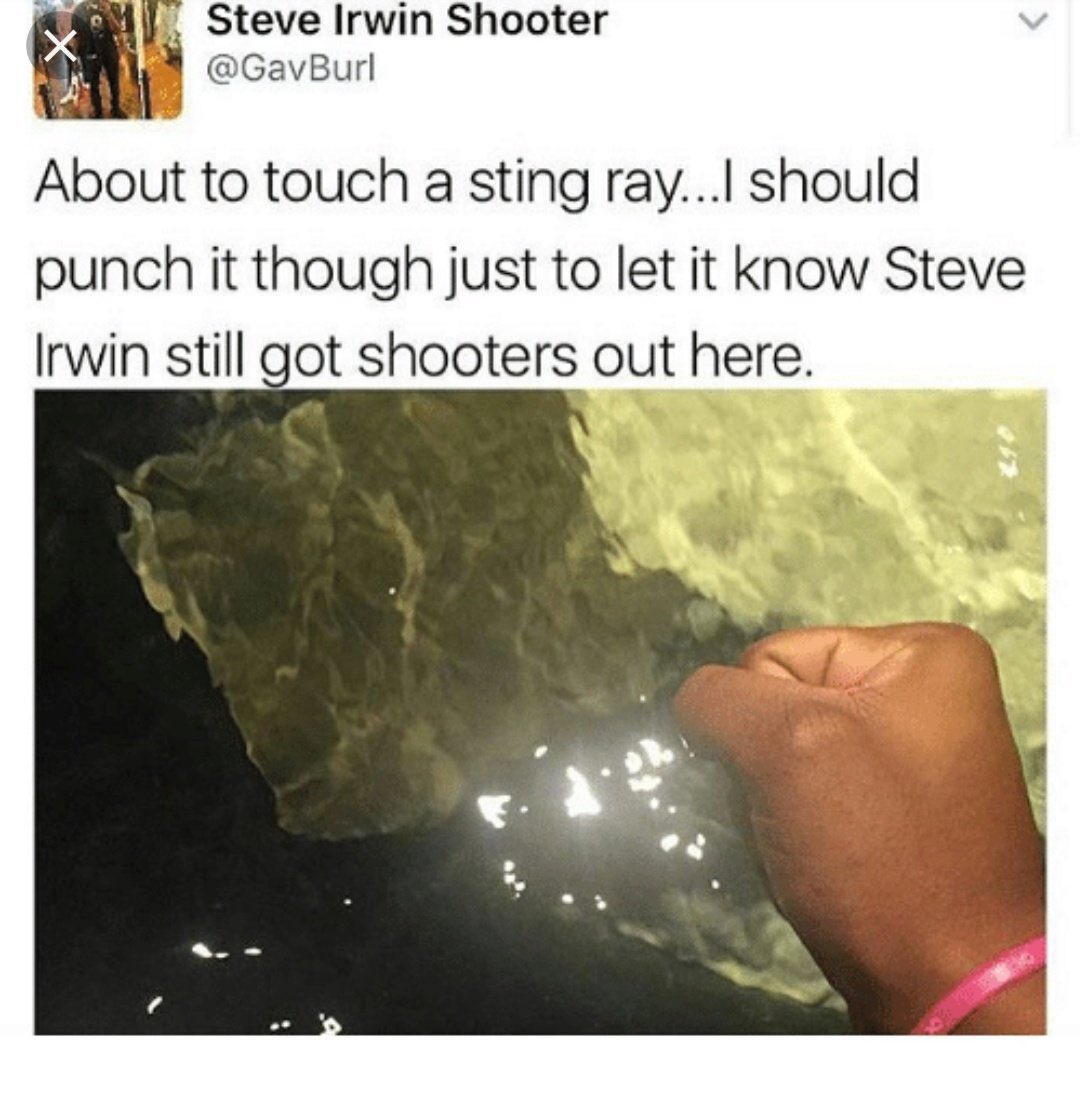 If the thorn hits the heart, as was the case with Stephen Irwin, as a rule, everything ends in death.
If the thorn hits the heart, as was the case with Stephen Irwin, as a rule, everything ends in death.
Photo. Bottom ramp
“Use a walking stick when walking in sandy areas to avoid stepping on them. And be careful jumping into the water,” advises Cadullader. “If you swim close to a stingray, short- and long-tailed stingrays will raise their tail if they feel threatened. If they do, stand back and, from a distance, enjoy how beautiful they are, don’t try to pet them!”
But the best way to treat stings is not to let them happen in the first place. When you’re wading through shallow water, do a “stingray move”: drag your feet instead of walking like you’re on the ground, this will reduce the chance of you accidentally stepping on a hidden stingray, giving it a chance to escape. When diving over sandy areas at great depths, stay clear of the bottom and watch for a rhomboid outline that may indicate a hidden stingray. If the stingray turns to face you or lifts its tail over its back like a scorpion, it would be wise to back off.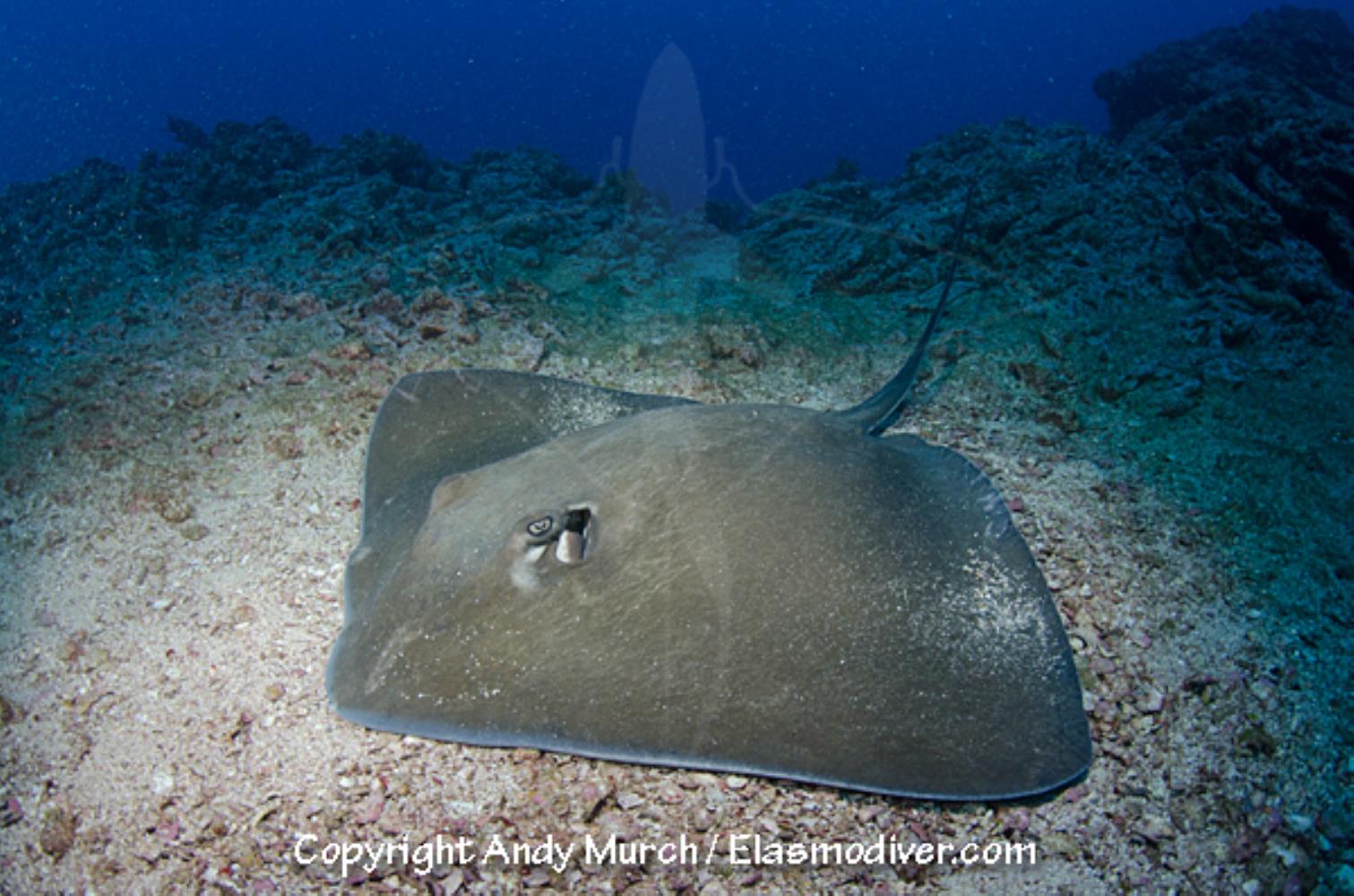
But if you get stung by a stingray, what should you do?
Rays can inflict deep lacerations that are very painful due to toxins and some people may be allergic to them.
“If the rod is still in the wound, leave it there. The rods are heavily serrated, and pulling out can cause much more damage,” warns Cadullader. “Hot water (warm tolerable, does not burn) will help the wound denature the venom to stop it from working and relieve pain. And see a doctor as soon as possible.”
The stinger is a modified dermal tooth at the base of the tail, making up approximately one third of its total length. The sting consists of a wedge-shaped spine with teeth along both edges and a venom gland at the base. Its removal is a difficult process and very painful. The venom is a fairly powerful nerve toxin that attacks the heart in complex and dangerous ways. But like most fish toxins, stingray venom is a protein that can be destroyed by heat. First aid should begin by immersing the wound in hot, but not scalding, water (110 to 113°F) for 30-90 minutes. The wound should then be washed with soap and water and any broken pieces of stingray should be removed. Do not attempt to suture or close a wound unless it is necessary to stop excessive bleeding. If the wound shows signs of infection (redness, swelling, pus), antibiotics are prescribed.
The wound should then be washed with soap and water and any broken pieces of stingray should be removed. Do not attempt to suture or close a wound unless it is necessary to stop excessive bleeding. If the wound shows signs of infection (redness, swelling, pus), antibiotics are prescribed.
Some stingray attacks on humans
A stingray hit a man’s face with its poisonous sting
In July 2019, James Taylor was in the water when he felt a burning pain on his face. He said the stingray hit him as he dived underwater into a darkened thicket of seaweed.
“I just felt a long cut on my cheek and as soon as I got to the surface I just saw blood,” he said. After being stabbed on Taylor, he called a friend who took him to a nearby hospital, where doctors told him he was lucky to be alive.
“I looked down at myself and I was wearing a black wetsuit, but it was just red with blood. I took a quick shower and there was red blood everywhere,” he said.